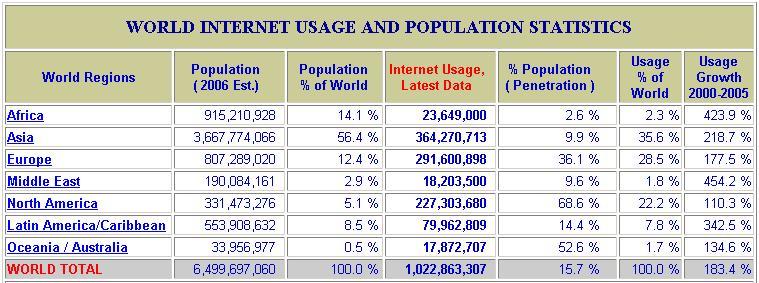Penetration of Broadband
Description:
The current broadband penetration in OECD countries (December 2005) is 13.6% of the population. The growth rate of the penetration was 15% in 2005. The top 4 countries are Iceland, Korea, The Netherlands and Denmark with penetration rates over 25%. In real number, the country with the largest amount of subscriber is the USA. The lowest penetration rate is granted to Greece with 1.4%. The EU 15 averages at 14.2% penetration.
The growth of broadband penetration amongst OECD countries is supported by the different governments and enjoys exponential growth:
2001 2002 2003 2004 2005
OECD 2.9 4.9 7.3 10.2 13.6
EU15 1.6 3.4 5.9 9.7 14.2
Enablers:
- Supporting role of government
- High users transfer rate from dial-up to broadband
- "Commoditisation" of broadband access in western countries, considered an utility
- Disruptive technologies facilitates penetration in developing countries
- Increasing spending power
- Cultural embedding of internet usage ("I will Google that!")
- increased usage for elderly
Inhibitors:
- Security
- Privacy - government control
- Decrease in birth rate (largest users are youngest amongst population), countries with highest birth rate has lowest penetration
- Learning curve limitation within the population
- questionable whether the demand for internet involves 100% penetration of the population or if full demand is at a lower level. currently, intenet penetration is:
source: http://www.internetworldstats.com/stats.htm
Paradigms:
With commoditization of broadband connections, increasing number of people make the amalgam between internet and broadband.
Experts:
www.balancingact.com
http://www.oecd.org/document/39/0,2340,en_2649_34223_36459431_1_1_1_1,00.html
http://www.internetworldstats.com/
Timing:
Dates for key milestones in the development of the driving force.
